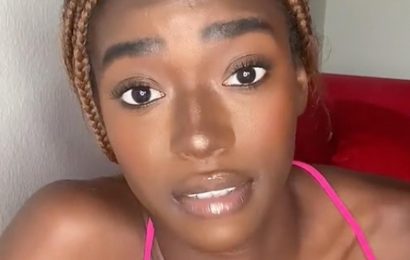LONDON — When Dr. Imran Haq was a medical student in 2014, he had a chance encounter with King Charles III at an event.
“I was struck by how normal he was,” said Dr. Haq, a surgeon for Britain’s National Health Service in Sheffield, England.
About a decade later, the monarch became Dr. Haq’s muse. After the death of Queen Elizabeth II last year, Dr. Haq said his fondness for the British royal family inspired him to take up a hobby: designing cereal boxes as merchandise to commemorate Charles’s coronation on May 6.
The boxes of his “Coronation Flakes” feature a cartoon rendering of the king on the front, along with the tagline: “They taste royally good.” On the back, there are puzzles and a cutout mask of Charles’s face.
Dr. Haq said that he sometimes spent two or three hours a night working on the design for the boxes, which he filled with cornflakes from Lidl, a British supermarket chain. They each cost 22 British pounds ($27).
“I just wanted to make something fun,” Dr. Haq, 36, said. “I know there’s a lot of apathy toward the royal family,” he added. “I really quite like them.”
Janet Crinion, 65, a retired nurse in Cloughey, Northern Ireland, has also expressed her appreciation for the British royals through craftsmanship. For Elizabeth’s Silver Jubilee, in 1977, Ms. Crinion and her mother knitted a tea cozy. They later sent it to the queen and received a thank-you letter in return.
Ms. Crinion has since started to sell her knits on Etsy, where she has listed various tea cozies, including styles depicting Charles, ahead of the coronation. “Since I started knitting King Charles, he has proved very popular,” said Ms. Crinion, who has also knitted likenesses of Elizabeth and President Michael D. Higgins of Ireland.
Robert Opie, the founder of the Museum of Brands in London, said that merchandise has been produced to mark royal occasions in Britain for hundreds of years. Some of those products — including a flask from the 1830s celebrating Queen Victoria and a canned beer produced for King George VI’s coronation in 1937 — were featured in “Jubilation: 200 Years of Royal Souvenirs,” an exhibit the museum staged last year for Elizabeth’s Platinum Jubilee.
When asked about the demand for trinkets honoring Charles, Mr. Opie said, “I think we’ll all be surprised, but I’m not quite sure in which way.”
Royal images, coats of arms and official insignia cannot typically be used for commercial products without permission from the royal family. But in February, Buckingham Palace announced in a statement that “rules governing the commercial use of royal photographs and official insignia may be temporarily relaxed to allow their use on souvenirs marking the coronation.”
In the months leading up to the king’s coronation, Mr. Opie said he had seen only “three or four brands launching special products.” He added that some of those items were toned down compared to trinkets produced for Prince Harry and Meghan Markle’s wedding in 2018.
Mr. Opie said that one possible reason he is seeing less souvenirs may be because Charles’s coronation will have less pomp and splendor than past ceremonies. The event’s procession to Westminster Abbey, for instance, will follow a route about one-mile long; for Elizabeth’s coronation, in 1953, the procession route was about five-miles long. According to Buckingham Palace, some 2,000 guests will be invited to Charles’s coronation; about 8,000 people were on the guest list for Elizabeth’s ceremony. Peter Marley, the associate publisher at Frances Lincoln Children’s Books in London, said that the early response to a new book it published this month about Charles has suggested it may become as popular as a book about Elizabeth published in 2022. “It’s looking very much in line with the Queen Elizabeth book, which was our best seller last year,” Mr. Marley said. Even with the relaxed regulations for coronation merchandise, his company took certain precautions while producing the Charles book, which was not officially authorized by the king. “The crown Charles is holding, for example, is an interpretation of what his crown might look like,” Mr. Marley said. Emma Bridgewater, the owner of a namesake ceramics line in Stoke-on-Trent, England, has regularly introduced collections of royal-themed merchandise after starting her company in 1984. She is predicting, based on past demand for those wares, that there will be interest in the collection of mugs, tea towels and plates her company has released for Charles’s coronation. Ms. Bridgewater said that excitement for royal souvenirs in Britain has often surged “a few days before the event itself.” That’s when, as she put it, the “whole place goes bunting crazy.” Source: Read Full Article










